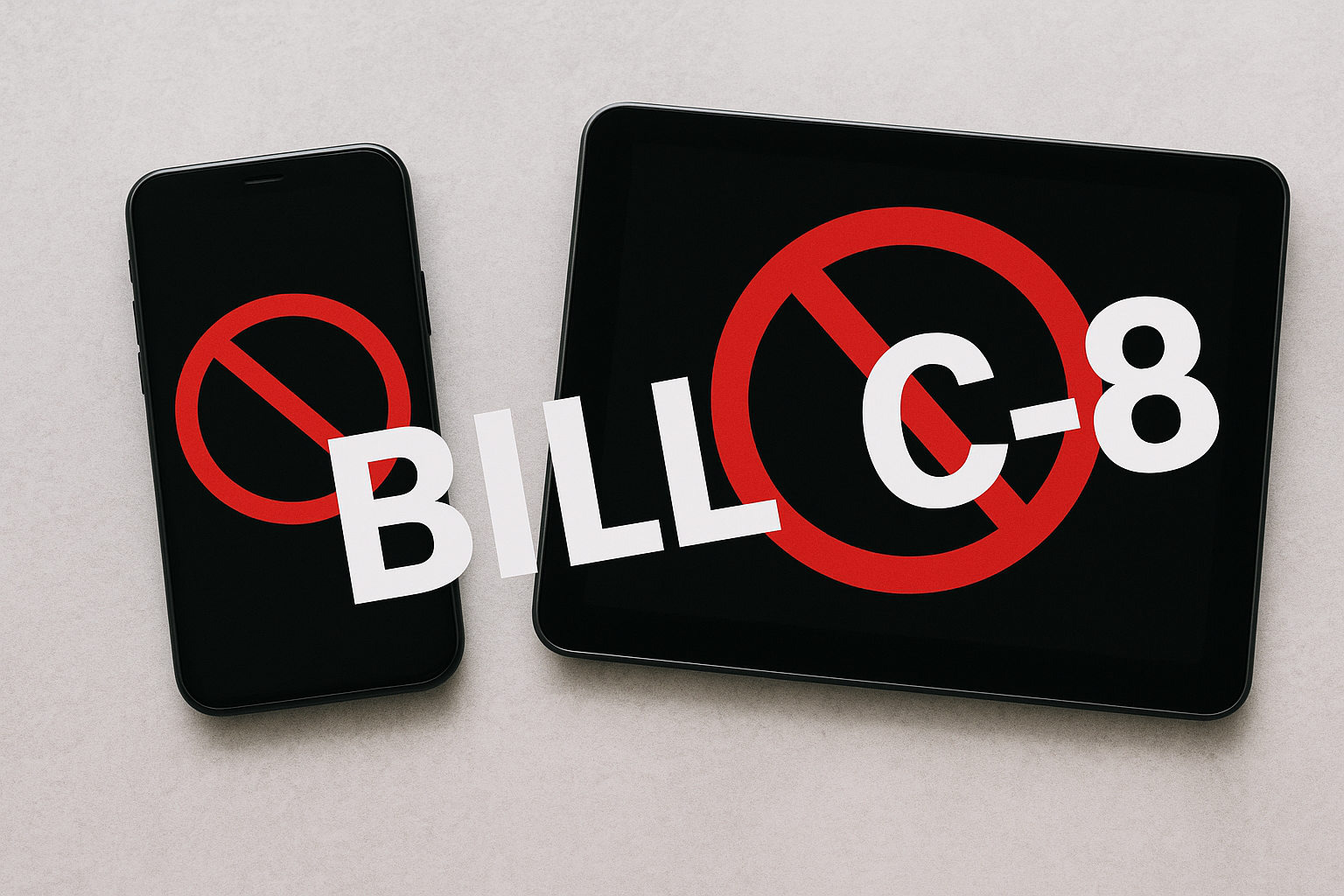I don’t want this to turn into a politics post — you’re here for action, not anger. But there’s been a flurry of attention around Bill C-8 (reintroduced June 18, 2025) because it would add stronger federal powers over telecommunications and create a new framework for protecting “critical cyber systems.” For creators who rely on platforms and phones as studios, offices, and storefronts, some provisions merit a calm, practical read so you can protect your work and income.
The headline in plain language
- Bill C-8 would create the Critical Cyber Systems Protection Act (CCSPA) and amend the Telecommunications Act, giving the federal government powers to order telecoms and other operators to take — or stop taking — certain actions for national cyber security reasons.
- That includes orders to telecom providers that could, in emergency scenarios, require service changes or suspensions. Civil-liberties groups and some observers worry about scope, safeguards, and review mechanisms.
So… could the government cut off my internet or phone?
Short answer: the bill would expand powers that could be used to direct providers to restrict services in defined circumstances. It’s aimed at protecting critical infrastructure from cyberattacks, but critics note the language gives ministers and the Governor-in-Council broad authority — and they want clearer judicial oversight and transparency built into any use of those powers. That’s an ongoing policy debate.
Why creators should care (concrete reasons)
- Single-point outages become riskier — If a ministerial order can change telecom behavior quickly, outages or service restrictions might happen in ways creators can’t control. That’s a business risk if your sales, livestreams, memberships, file hosting, or customer support rely on one network.
- Encryption and privacy rules could change — The bill allows the government to influence telecom security requirements; advocates warn this could be used to weaken encryption standards or demand changes that affect privacy and platform security. For creators who hold private DMs, patron lists, or client files, that’s worth watching.
- Compliance demands on platforms — The CCSPA targets “designated operators” and critical systems. While most social apps aren’t “critical infrastructure,” platform behaviors and contracts can shift fast after new federal rules — meaning takedowns, content enforcement, or data handling could change in response to regulatory pressure.
Practical checklist — protect your content and income (do these now)
- Backup everything off-platform. Keep local copies of videos, audio stems, high-res photos, subscriber/export lists, and purchase records. Use at least one physical backup (external SSD) and one cloud backup with a different provider than your main platform.
- Mirror your audience. Build an email list (you control it). Platforms come and go; emails are portable. Export subscriber data from platforms where allowed and keep copies.
- Diversify revenue & platforms. Don’t rely on a single platform or payment processor. Consider multiple places to host content (YouTube + Vimeo + self-hosted embeds), multiple membership/payment options (Patreon, Ko-fi, Stripe on your site).
- Decentralize publishing where it makes sense. Host critical assets on your own domain (your blog or a small e-commerce site) and use Content Delivery Networks (CDNs) for resilience. Your domains (e.g., timetoxplore.com) are assets you control.
- Keep legal & financial records handy. If an access restriction affects business operations, you’ll need receipts, contracts, and revenue records for insurance or emergency claims.
- Plan for offline creation. Have workflows that let you keep creating offline (phone + local editing software) and queue posts for later upload.
- Understand platform TOS and appeals. Know how to file appeals on major platforms and keep copies of policy communications.
- Watch for changes and join creator groups. Advocacy and creator coalitions can be faster at flagging real changes than general media.
If you lose access suddenly — a short emergency playbook
- Use mobile tethering or a different carrier (if available) to get temporary online access.
- Send an email to your list explaining the situation (people are forgiving if you’re transparent).
- If you can’t post, update profile bios on other platforms with short status links (link to a backup page or mailing-list signup).
- Document everything — timestamps, screenshots, messages from platforms — in case you need to appeal or seek legal advice.
- Consider temporary paid options to rent cloud hosting or alternative streaming services if you have an important, time-sensitive event.
What to watch in the Bill as it progresses
- Scope of ministerial orders: how narrowly are “emergency” and “critical cyber systems” defined?
- Judicial oversight and transparency: will there be required immediate judicial review or after-the-fact reporting? Civil groups are pushing for this.
- Protections for encryption & privacy: will the law include explicit safeguards to prevent weakening of end-to-end encryption? Watch legal commentary and the government’s Charter statement.
Bottom line (non-political)
Bill C-8 is primarily pitched as a national cybersecurity measure, but it includes powers that touch the telecom layer creators depend on. That doesn’t mean immediate mass shutdowns — it means prepare like a small business owner: back up, diversify, own your audience, and document your work. Those moves not only protect you in the face of regulatory change — they make your brand more resilient overall.
Take the Time to Xplore and know your rights.
